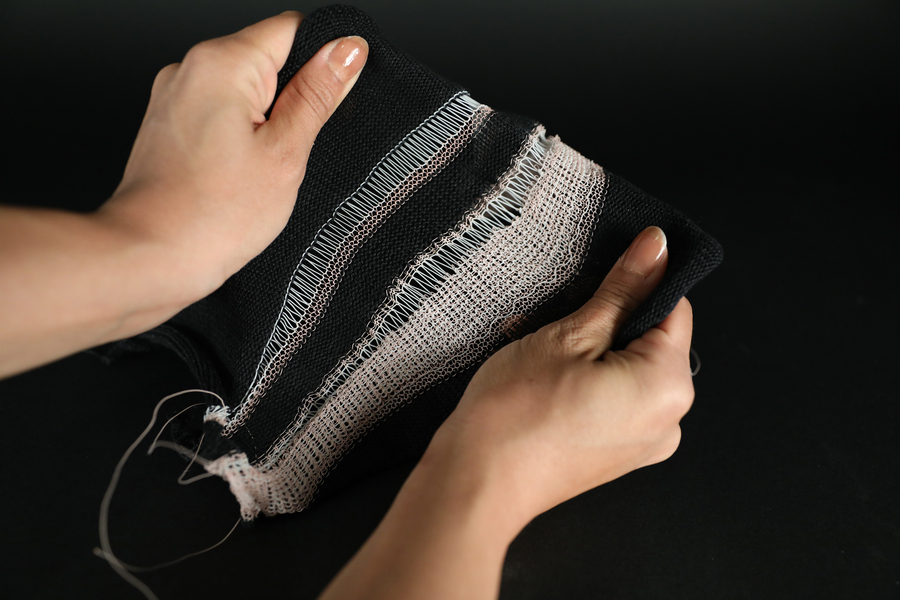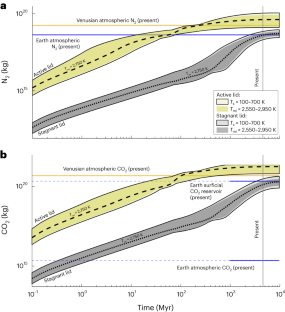2023-10-26 マサチューセッツ工科大学(MIT)
 Researchers from MIT and Northeastern University developed a liquid crystal elastomer fiber that can change its shape in response to thermal stimuli. The fiber, which is fully compatible with existing textile manufacturing machinery, could be used to make morphing textiles, like a jacket that becomes more insulating to keep the wearer warm when temperatures drop. Credit: Courtesy of the researchers
Researchers from MIT and Northeastern University developed a liquid crystal elastomer fiber that can change its shape in response to thermal stimuli. The fiber, which is fully compatible with existing textile manufacturing machinery, could be used to make morphing textiles, like a jacket that becomes more insulating to keep the wearer warm when temperatures drop. Credit: Courtesy of the researchers
◆この低コストの繊維は、テキスタイル製造技術と組み合わせて使用でき、電気を流すことで形状を制御できます。これにより、ウェアラブルファブリックや他の用途に対してアクチュエーションとセンシング機能を組み込みやすくなります。また、この繊維は低コストで製造でき、様々なテキスタイルに組み込むことが可能です。
◆将来的には、この繊維がリサイクル可能または生分解性になることを目指しており、製造プロセスを簡素化することで広く利用可能になることを期待しています。
<関連情報>
- https://news.mit.edu/2023/shape-shifting-fiber-can-produce-morphing-fabrics-1026
- https://dl.acm.org/doi/10.1145/3586183.3606732
FibeRobo: 温度調整可能な液晶エラストマーの連続延伸による4次元繊維界面の作製 FibeRobo: Fabricating 4D Fiber Interfaces by Continuous Drawing of Temperature Tunable Liquid Crystal Elastomers
Jack Forman,Ozgun Kilic Afsar,Sarah Nicita,Rosalie Hsin-Ju Lin,Liu Yang,Megan Hofmann,Akshay Kothakonda,Zachary Gordon,Cedric Honnet,Kristen Dorsey,Neil Gershenfeld,Hiroshi Ishii
UIST ’23: Proceedings of the 36th Annual ACM Symposium on User Interface Software and Technology Published:29 October 2023
DOI:https://doi.org/10.1145/3586183.3606732
ABSTRACT
We present FibeRobo, a thermally-actuated liquid crystal elastomer (LCE) fiber that can be embedded or structured into textiles and enable silent and responsive interactions with shape-changing, fiber-based interfaces. Three definitive properties distinguish FibeRobo from other actuating threads explored in HCI. First, they exhibit rapid thermal self-reversing actuation with large displacements (∼40%) without twisting. Second, we present a reproducible UV fiber drawing setup that produces hundreds of meters of fiber with a sub-millimeter diameter. Third, FibeRobo is fully compatible with existing textile manufacturing machinery such as weaving looms, embroidery, and industrial knitting machines. This paper contributes to developing temperature-responsive LCE fibers, a facile and scalable fabrication pipeline with optional heating element integration for digital control, mechanical characterization, and the establishment of higher hierarchical textile structures and design space. Finally, we introduce a set of demonstrations that illustrate the design space FibeRobo enables.



